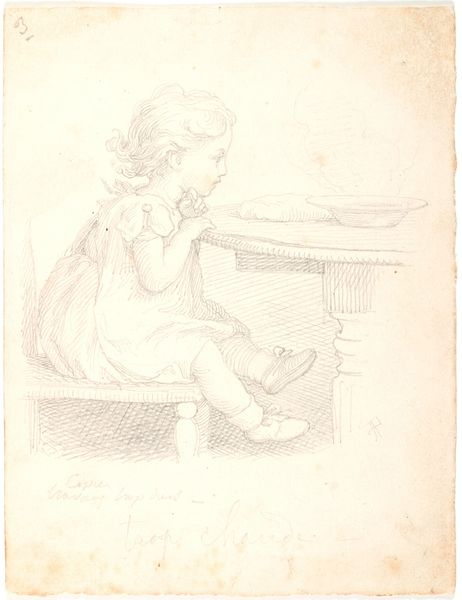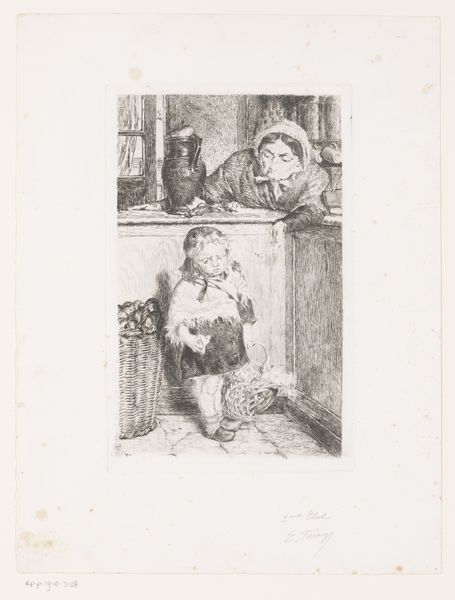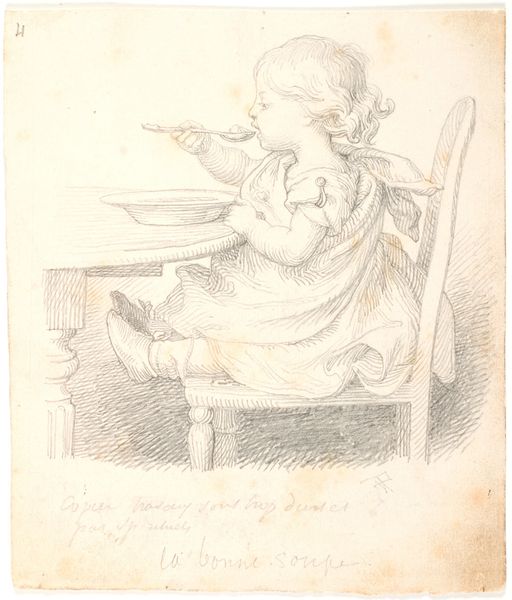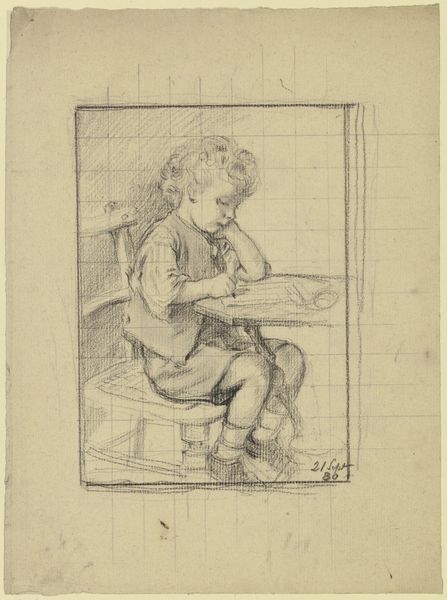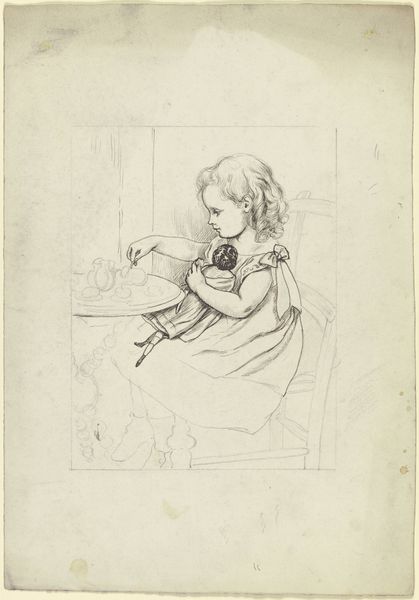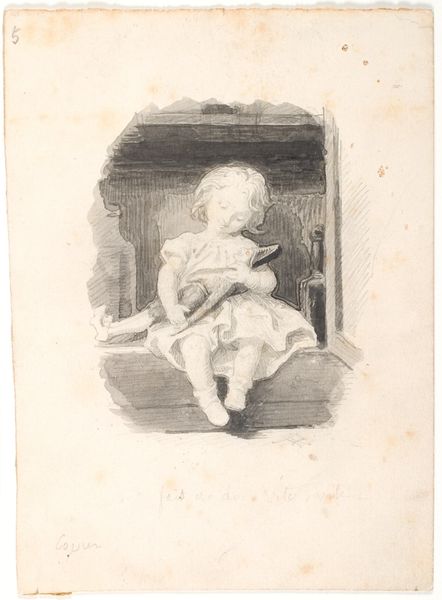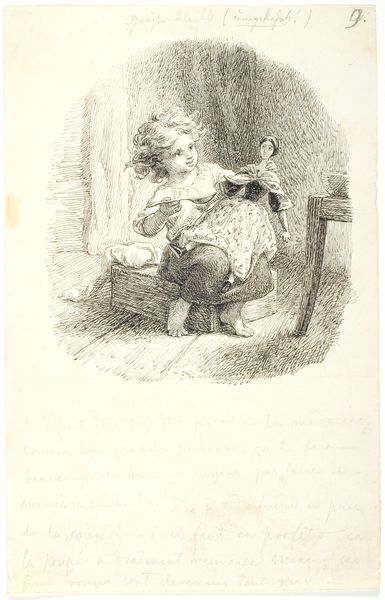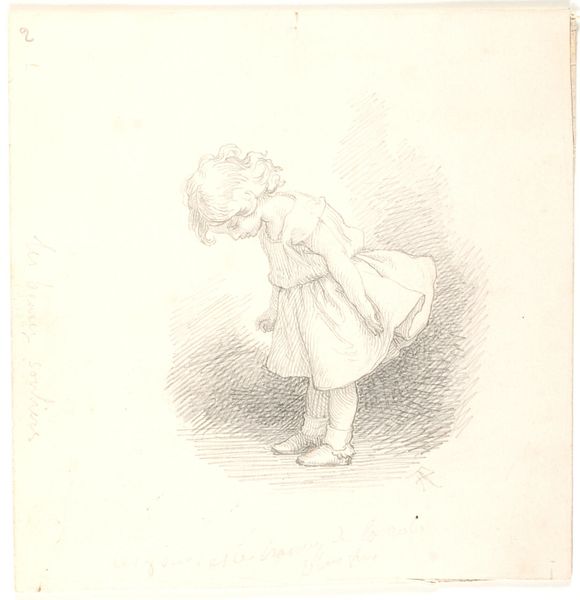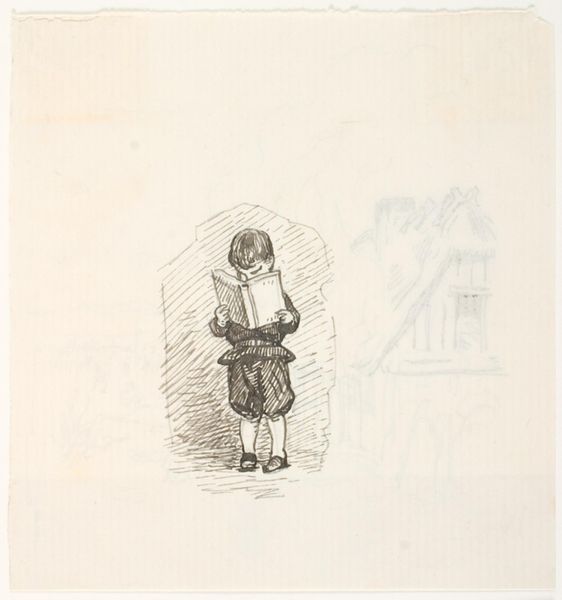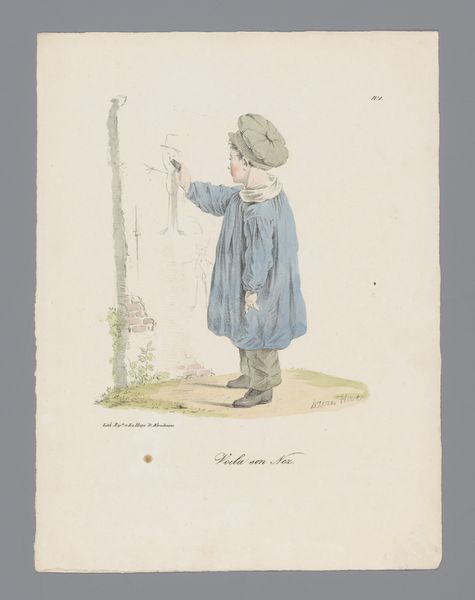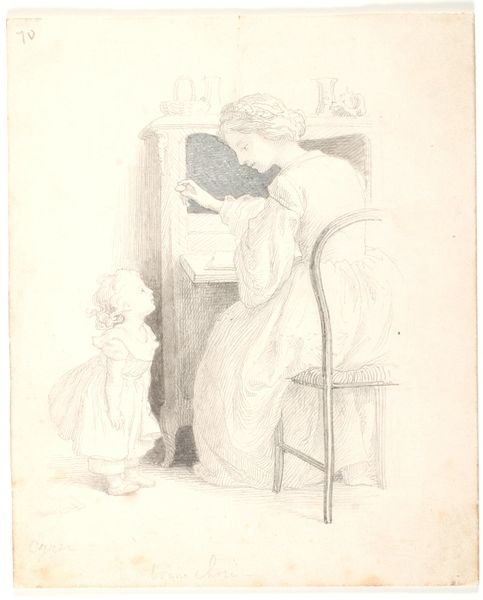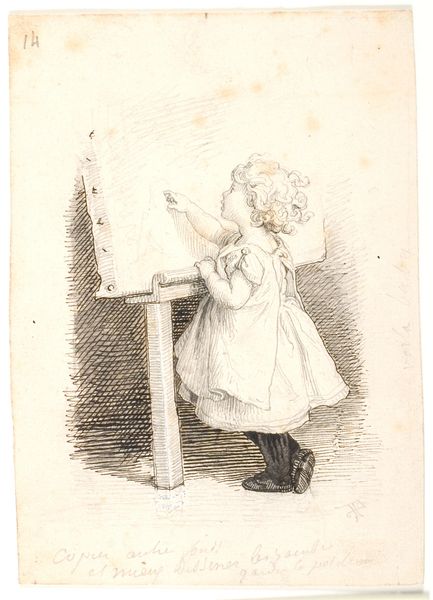
Scene på en altan. Lille dreng, der betragter nogle duer. På gelænderet i baggrunden en sammenrullet kat 1845
0:00
0:00
drawing, pencil
#
portrait
#
drawing
#
fairy-painting
#
landscape
#
figuration
#
romanticism
#
pencil
#
genre-painting
Dimensions: 209 mm (height) x 124 mm (width) (bladmaal)
Curator: Lundbye’s 1845 pencil drawing, “Scene på en altan. Lille dreng, der betragter nogle duer. På gelænderet i baggrunden en sammenrullet kat," presents us with a quiet domestic moment. It is currently located at the SMK, the National Gallery of Denmark. Editor: It has such a hushed, tender atmosphere. The soft pencil strokes create a gentle quality, almost dreamlike, as if captured in a fleeting memory. Curator: Indeed. Lundbye skillfully uses the pencil to create varying textures and tones. Observe the light, airy quality of the architectural setting juxtaposed with the weightier presence of the child and the doves. Note how his use of hatching emphasizes contour and dimension. Editor: The image is compelling because of its depiction of children and animals within the sphere of Romantic painting. Lundbye offers us insight into 19th-century bourgeois domesticity in Denmark. Who is privileged enough to spend time observing birds? Who owns the spaces in which such observations can occur? It points toward an aesthetic appreciation deeply ingrained in class dynamics and human/animal hierarchies. Curator: That may well be, but within this drawing, I observe something fundamental. The artist invites us to reflect on the act of looking. He encourages an appreciation of the inherent formal qualities: line, form, light. How these contribute to the overall harmony and balance is itself a meditation on observation. Editor: The Romantic movement valorized childhood and the inherent “purity” or innocence presumed of that age. But perhaps this notion should be destabilized by considering the social contexts informing Lundbye's depictions, highlighting how ideologies about childhood often overlook the realities of class, labor, and social expectations. Curator: No doubt, this lens certainly informs how we engage with the work in our current moment. Nonetheless, such factors need not wholly detract from our awareness and appreciation of its formal merits and how those merits contribute to an emotive aesthetic. Editor: The drawing pushes beyond merely representing a scene. By questioning who is allowed to witness this supposedly innocuous scene, and by acknowledging the work's inherent subjectivity, we may be in a position to interpret and act upon what is perceived. It also highlights our place in history. Curator: Precisely, it creates space for the viewer to ponder the layers of form and content that coalesce to offer the viewer a unique space of reflection. Editor: And an opening into how we might choose to use that reflective space.
Comments
No comments
Be the first to comment and join the conversation on the ultimate creative platform.
